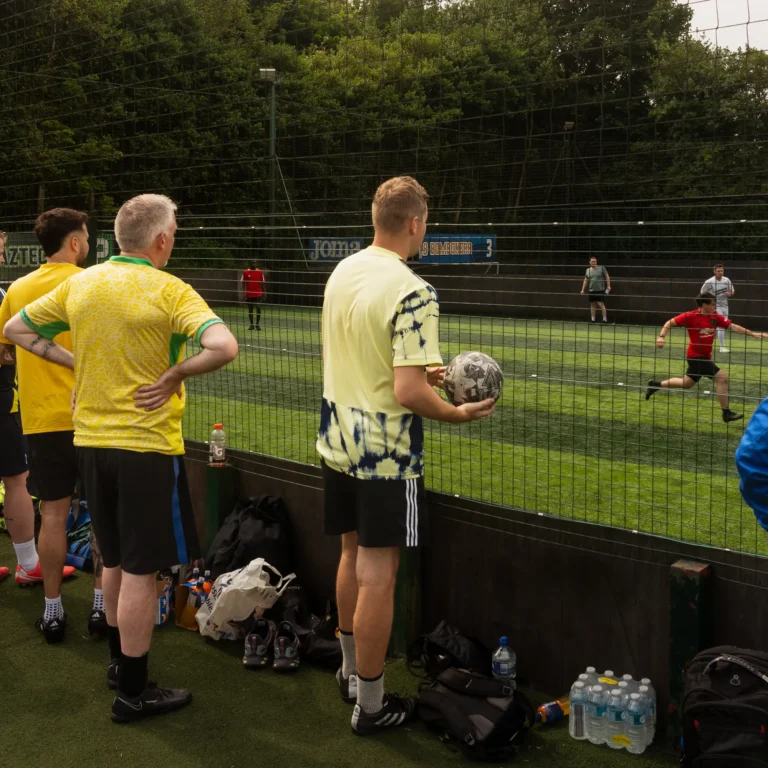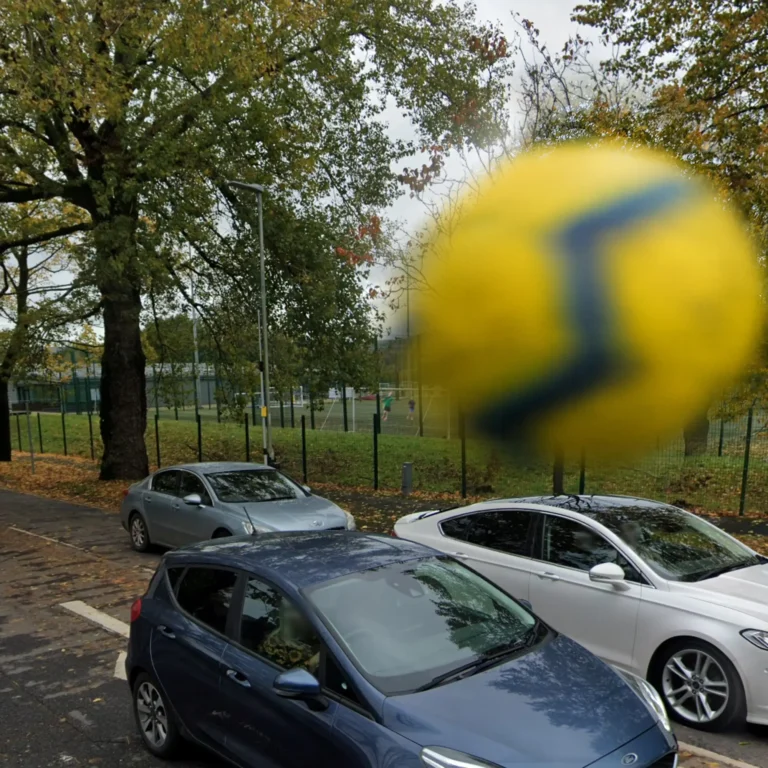Some of us remember when casual football games could start with a few friends and some jumpers for goalposts. Over time, busy schedules, more technology and fewer spontaneous meet-ups meant a lot of adults hung up their boots. Now that’s changing. Across the UK, more adults in their 30s, 40s, 50s and beyond are rediscovering the joy of playing football after years away. It’s an important trend because it’s helping people feel a bit healthier and happier, which is much needed given how things are in the UK right now. We’ll explore why more people are returning to local football games and how projects like Football for All are opening the door for everyone.
Everything has to be organised now, even simple football games
Back in the day, it wasn’t unusual to turn up at a park and find enough people for a kickabout. There was a natural culture of meeting on the pitch. Over the years, however, life became more structured and so did our football. Casual football games that once formed organically started to disappear, replaced by organised leagues or nothing at all.
In the modern era, everything has to be arranged in advance. People grew accustomed to booking activities on apps, like gym classes or a five-a-side games. Unfortunately, many traditional clubs and leagues were slow to adapt to this on-demand trend so plenty of people missed out on the game they love. Formal teams with fixed schedules just aren’t possible for everyone to commit to.
Luckily, technology and community efforts have helped close the gap. Platforms began connecting casual players for flexible football games. At Football for All, we chose Footy Addicts platform because it offers the best coverage, strong local presence and bespoke tools to support community organisers. The app now helps us run more than 2,500 casual games every month nationwide and give players of all abilities around 40,000 opportunities to play. It’s made local football games much easier to access for everyday people.
Why adults stopped playing
If so many people love football, why did they ever stop playing? The reasons are familiar. Work, family and responsibilities often push sports aside as we move into adulthood. “It’s difficult because you get more responsibility at those ages,” one former player explained, noting how moving for a job or juggling childcare makes it hard to stay with a club. In our 20s and 30s, many of us simply didn’t have the time or energy to train twice a week and play every weekend. Others felt the financial pinch because of expensive pitches, gym memberships or club fees that didn’t fit the budget when mortgages and bills took priority.
Over the past couple of decades, a spectator culture also took hold. Football became something people watched on TV rather than played on weeknights. Top-flight football’s dominance grew so much that it now “draws more viewing than the next nine sports combined” says The Guardian. Millions cheer on their teams from the sofa but seldom experience the game with a ball at their feet.
Not long ago, this would have been unthinkable. Previous generations were out playing in the street or park whenever they could. The result of all these factors was a long period where adult participation in football dropped. In fact, between 2015 and 2023 there were over a million fewer adults playing football in England, a decline partly worsened by the pandemic.
Thankfully, that trend is finally turning around. People are realising that something has been missing. Watching football and going to games is fun but it can’t replace the thrill of playing it. The itch to get back on the pitch never truly goes away for a real football lover. Now that more flexible options exist, those who drifted away are feeling that pull again.
‘Wish someone had told me about this earlier!’
Today we’re seeing a real comeback in adult grassroots football. Sport England’s latest survey shows record levels of activity, with especially significant growth among older adults getting active. In fact, the proportion of people aged 55+ meeting recommended exercise levels has jumped from 51% to 58% since 2016. A huge rise driven in part by older people returning to sports like football. Women’s football has also grown at the community level. Notably, women in their mid-30s and mid-50s have higher participation in football now than they did a decade ago. All around, adults who thought their playing days were over are finding new chances to kick a ball again.
At Football for All, we’ve seen this rise in interest first hand through our community sessions. Every week we welcome newcomers in their 30s, 40s and 50s who haven’t played in years. They might be a bit rusty or a yard slower but the passion is still there. And once they score that first goal or make a great pass, you can see the years melt away. It’s like being a kid again for a moment and it’s wonderful to witness.

Community projects bring Football games to everyone
One big reason for this positive trend is the growth of community football projects focused on inclusion and accessibility. Football for All is a great example of how things are changing. Our mission has always been to create healthier, happier communities through football and that means making the game available to everyone.
In the past, opportunities for casual adult football were few and far between. If you weren’t on a formal team, you might have felt there was nowhere to play. Now, thanks to community initiatives, that’s no longer the case. We’re close with local volunteers and embraced digital tools to launch friendly, drop-in games across the UK. In just April and May 2025, for instance, Football for All launched 40 new weekly inclusive football games for local residents (from beginners to old-timers alike).
We know adults have busy lives so we don’t ask for a huge commitment. You can book a single session when you have time or come whenever you’re free. This flexibility has been key to encouraging people back. As one coach noted in a recent Sport England report, clubs need to accommodate different abilities and schedules. Even if that means shorter games or special sessions because “a lot of people haven’t got that time or fitness” for the full 90 minutes anymore.
We’ve taken that to heart. Football for All sessions are small-sided (like 5 or 8-a-side) and last an hour so it’s easier to fit exercise into a hectic week. We’ve lowered the barriers like time, cost and skill level to welcome back people who thought organised sport had nothing to offer them.
Inclusivity is another driving force. Unlike traditional clubs that might focus only on the most competitive players, community football is about everyone getting a game. We run co-ed sessions and women-only games and have plans to introduce youth and walking football sessions. No one is too old, too unfit or “not good enough” to join. This creates a supportive atmosphere where a newcomer feels comfortable easing in. It’s common now to see a mix of ages and backgrounds sharing the pitch. At Football for All, we’ve seen a 60-year-old dad and a university student play together more than once, always encouraging one another on the pitch. That sense of community and belonging is really powerful.
The benefits of playing Football again
Why are so many adults flocking back to football? One reason is they’re feeling the benefits. It’s not just nostalgia. Playing again genuinely improves people’s well-being. Physically, casual football is a fantastic workout. Even a small-sided game will get your heart pumping and muscles moving in a way that running on a treadmill just can’t match. Importantly, it’s fun so it doesn’t feel like a chore. That makes it easier to stick with an active routine. Public health experts are thrilled to see more adults getting exercise through football, because it can help tackle issues like obesity, heart disease and mobility in older age.
Then there are the mental health benefits. Football is as much about the mind as the body because it reduces stress and brings joy. Many returning players say that being part of a team again lifts their mood and confidence. There’s a camaraderie in sports that you just don’t get from a solo gym session. A recent study of walking football participants found that their emotional wellbeing scores were above the national average, and feelings of loneliness were much rarer than among their peers. Only 1% of walking footballers reported feeling “often lonely”, compared to about 5% of older adults nationally. As one 70-year-old player put it, ‘It’s the banter’ that keeps him coming back.
We hear stories like this all the time. People tell us how joining a local game has improved their life. Some have made new friends after moving to a new city. Others say playing football again helped them cope with work stress or mental health struggles. In a world where a lot of us spend too much time in front of screens, getting out on the grass with real people can be almost therapeutic. It reconnects us to real community and simple joys.
Fans are players too
Another factor in the return of adult players is changing attitudes. The boom in community football is gradually shifting the culture from passive to active. When you see your friends or colleagues signing up for casual football games, it inspires you to give it a go as well. High-profile campaigns and events have helped too. The excitement around major tournaments (like the World Cup, AFCON or the Women’s Euros) has reminded people how much they love the game. Rather than only cheering for the England team on TV, more fans are deciding to have a kickabout themselves.
Football fandom and participation go hand in hand. You can be a lifelong supporter and an occasional player. In fact, playing the sport often deepens your appreciation for it. We’ve seen longtime fans dust off their boots after realising that local football can fit into their routine. Some had assumed their playing days were over after school or university.
But when they hear about a friendly community session with no trials or intense fitness requirements, the usual reaction is, “Why not? Let’s give it a try.” Often that first session is all it takes. They remember how exhilarating it is to score a goal or make a great pass. Suddenly the game on telly don’t seem nearly as appealing as being on the pitch.
Conclusion and how to get involved
It’s inspiring to see more adults reclaiming their love of football. After years away, the game still welcomes them back with open arms. The rise in casual adult football is improving physical health, boosting mental wellbeing and bringing back a sense of belonging that many had lost. At Football for All, we’re proud to be part of this movement and make football accessible, inclusive and fun.
If you’ve been on the fence about playing casual football games again, why not take that step? Dig out your boots, find a local Football for All session to book and just turn up. It doesn’t matter if you’re not as fit as you once were. What matters is the enjoyment. You might surprise yourself with how well you control the ball and how much you end up laughing. Football truly is a sport for life and it’s never too late to start again.
Join us on the pitch and be part of our growing football subculture. Your past self will thank you and your present self will have a blast.


